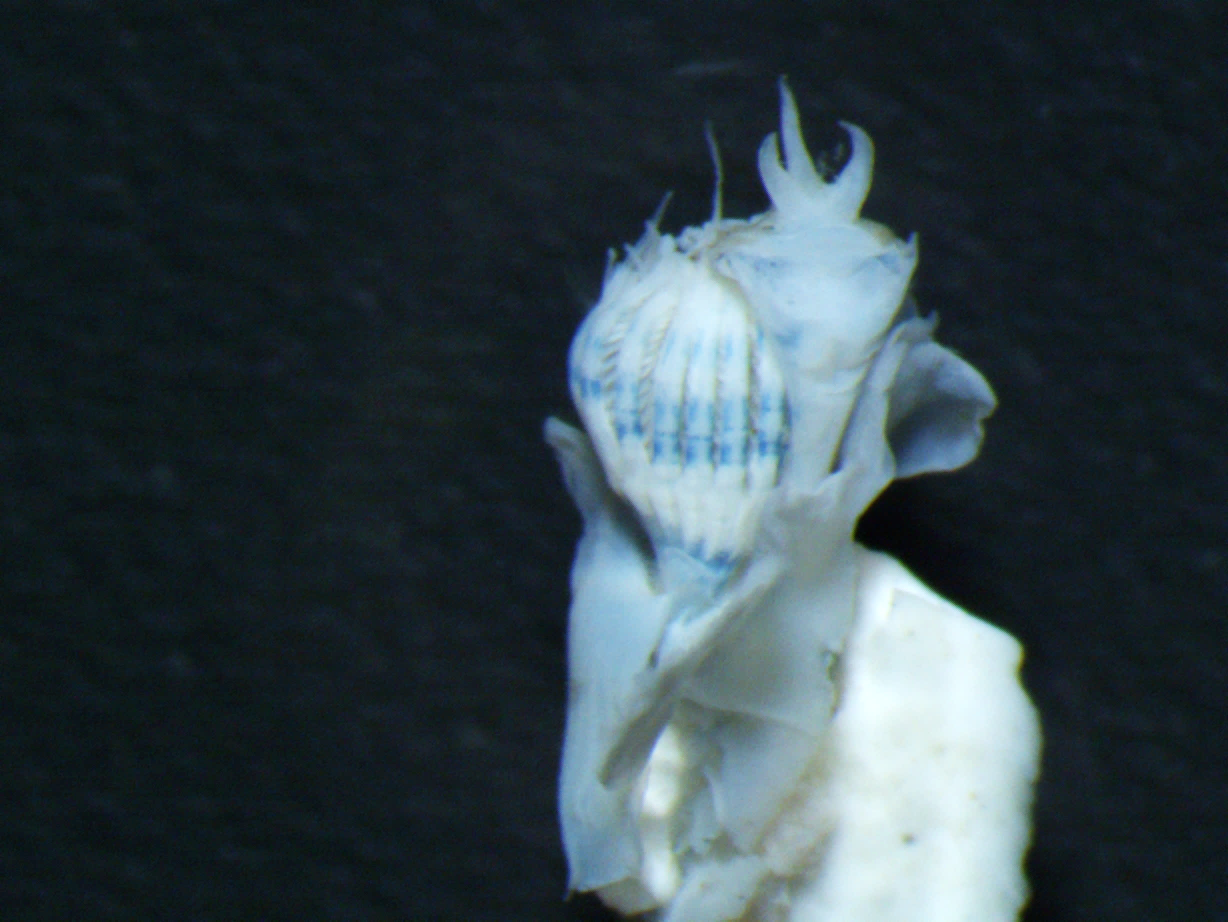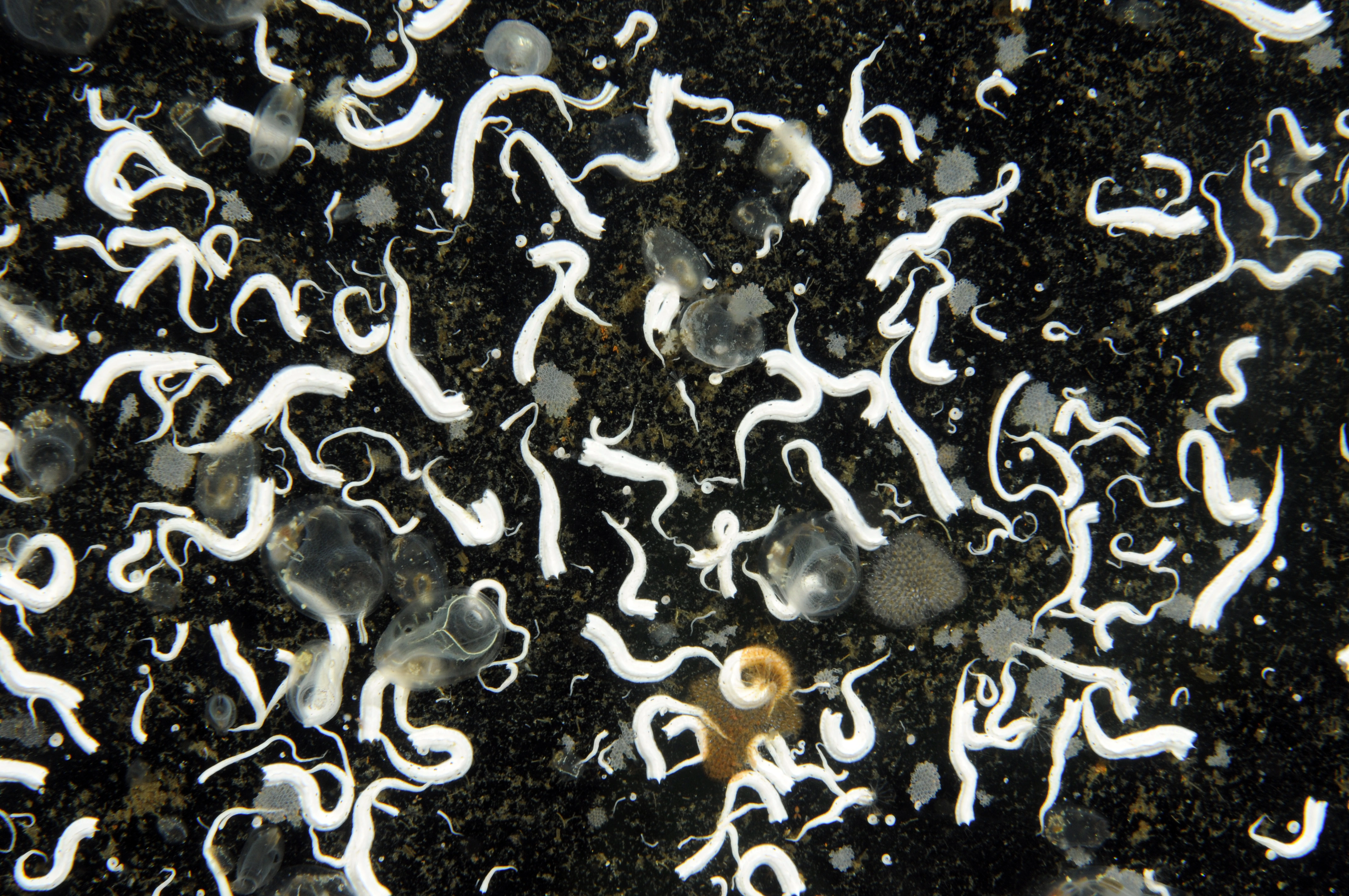Spirobranchus triqueter
Spirobranchus triqueter, showing the typical tube, with a conspicuous mid-longitudinal keel.
This is one of the most common serpulids, or calcareus tube worms, in Norway. Spirobranchus triqueter is found in shallow waters attached to hard natural or artificial substrates. In Norwegian ports, this species is common and often very abundant. It was previously known as Pomatoceros triqueter.
- Innhold
- Measurements
- Characteristics
- Look-alikes
- Biology, ecology and behaviour
- Habitat
- Recommended citation
Spirobranchus triqueter
Spirobranchus triqueter, showing the typical operculum with three distal spines.
Measurements
Up to 2.5 cm long and 3–5 mm wide. It has eight thoracic and several abdominal segments.
Characteristics
Spirobranchus triqueter secretes a white calcareous tube, completely attached to the substrate or with the anterior end elevated. The tube is smooth, typically subtriangular in cross-section and recognizable by a single longitudinal keel in the middle that ends in a projection over the anterior opening. The radiolar crown is blue or variable in colour such as white and red, often in transverse bands. The operculum, that is the lid that closes the tube when withdrawing, is a shallow or inverse conical ampula covered by a calcified endplate with more or less developed spines, generally three, and sometimes branching. The operculum can be covered by debris and the structure is often not evident. The peduncle is broad, triangular in cross-section and with distal lateral wings. Pseudoperculum is absent. The thoracic membranes form a ventral apron on the last thoracic segment. The first chaetiger has bayonet-like chaetae, with numerous hairlike processes on its basal portion.
Spirobranchus triqueter, anterior end of fixed specimen, showing operculum with the typical spines.
Look-alikes
Spirobranchus triqueter is distinguished from other Norwegian serpulids by the tube morphology, as this species has a conspicuous longitudinal medial ridge ending in a projection over the anterior opening, and a characteristic operculum, which is inverse conical in shape and with a calcified endplate with more or less clear spines. There is another morphologically similar species of Spirobranchus reported in the Northeast Atlantic, the intertidal Spirobranchus lamarckii, which is more common around the British Isles and Bretagne, but the later has not been reported in Norwegian waters. In contrast S. triqueter is reported with a wider distribution and in subtidal environments.
Spirobranchus triqueter, a recent established population.
Spirobranchus triqueter
Biology, ecology and behaviour
The species is a sedentary tubeworm which never leaves its tube. It is very common and abundant in shallow water fouling communities. The larvae are pelagic for about 2–3 weeks in the summer and about 2 months in winter. Settlement occurs mainly in spring until autumn. Spirobranchus triqueter may live for up to 4 years. Its dispersal potential is high, depending on local hydrographic conditions. They are early colonizers of artificial substrates.
Habitat
The species is found attached to hard substrates. It is common in the eastern Atlantic, and mainly found in northwest Europe, from Norway to the Mediterranean.
Spirobranchus triqueter out of its tube.
Recommended citation
Capa M. Spirobranchus triqueter (Linnaeus, 1767). www.artsdatabanken.no/Pages/313092. Downloaded <year-month-day>.






